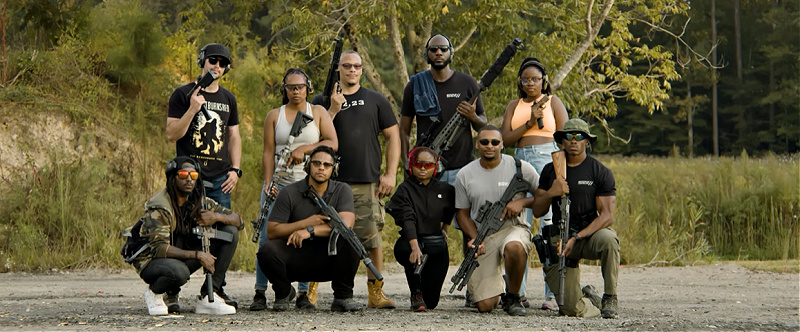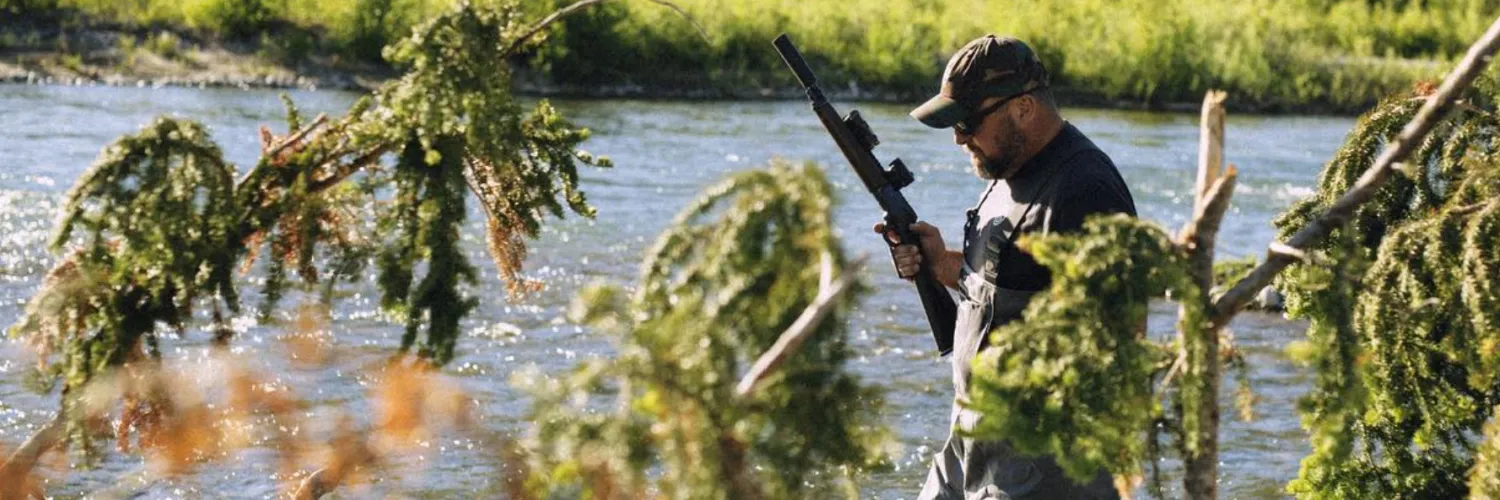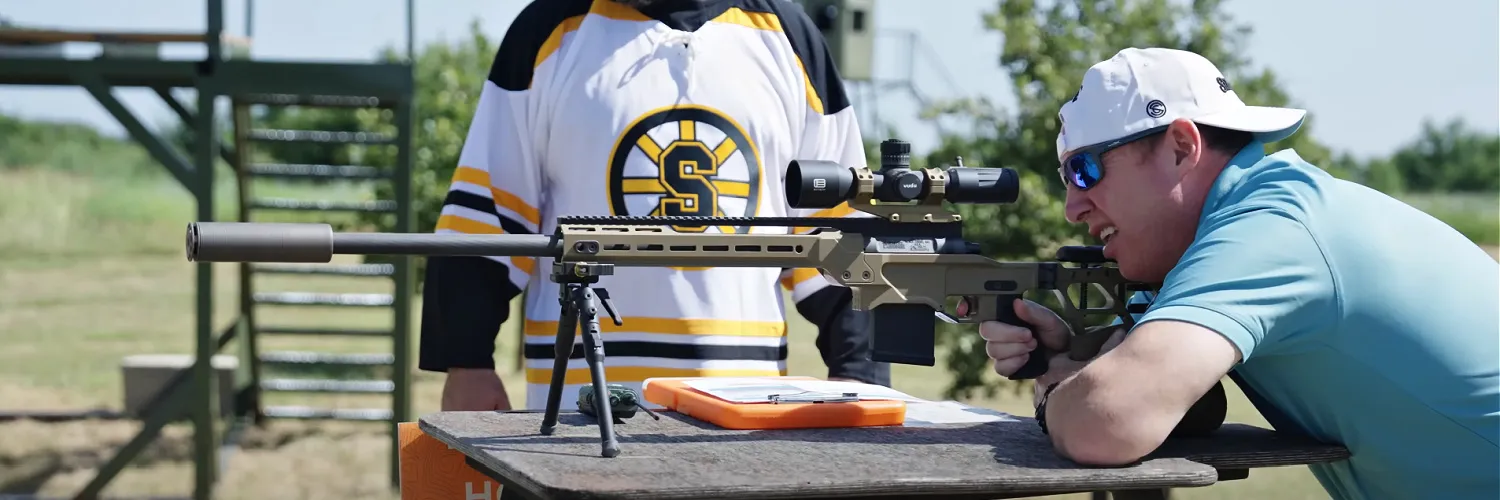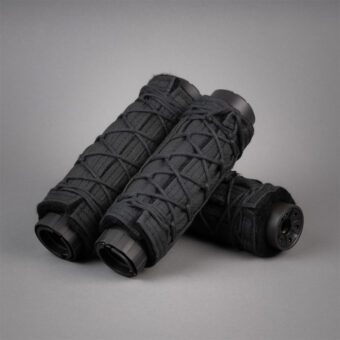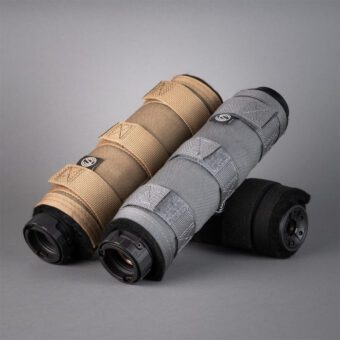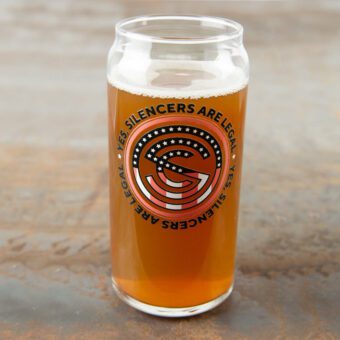Home / Silencer & Gun News / American Gun: Diversity of Owner, Commonality of Culture
American Gun: Diversity of Owner, Commonality of Culture
Home / Silencer & Gun News / American Gun: Diversity of Owner, Commonality of Culture
American Gun: Diversity of Owner, Commonality of Culture
- May 12, 2023
As 2021 draws to a close, we’re taking a look back at the American Gun video series that we started in July.
Each month we’ve added a new video, each featuring an American gun owner. We spoke with individuals from all walks of life with a wide array of reasons for firearm ownership. Each of them is different to a varying degree, as are the firearms they own and sometimes carry. But there are many commonalities as well.
The SilencerCo American Gun series illustrates and celebrates the commonality and that great diversity. It’s an intimate look at the foundation of American Freedom and those who support the Second Amendment—with a focus on the right to bear arms and a view of the vast range of people who choose to do so.
Enjoy!
American Gun – The Realtor
William Lawson
Meet JoAnna Anderson. She’s a realtor in Charlotte, North Carolina. She’s also a member of a growing demographic: the new gun owner who has decided to take responsibility for her own safety. Along the way, she is learning the many benefits of accepting the responsibility of being armed. Her story is representative of many of the estimated eight million Americans who have taken on that same responsibility for the first time.
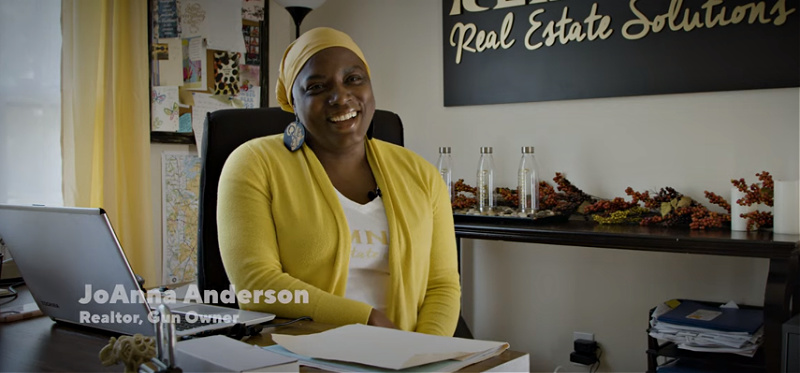
JoAnna, the youngest child in a large family, says she has “great leadership skills” and says she is a “trailblazer.” She is the first entrepreneur of her family, where she is obviously successful, and the “first girl to own a gun.” She first considered gun ownership as a way of connecting to her father, who had owned guns. She saw them mainly as collectibles. Then a series of attacks against realtors convinced her of more personal practical uses for a firearm. She bought her first handgun and took the concealed carry course, generously provided by her realtor association to those members who wanted it.
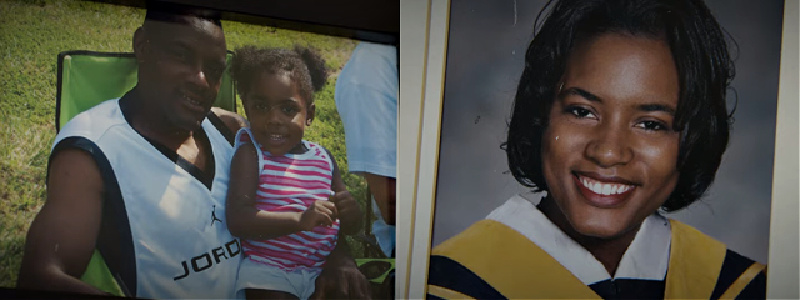
JoAnna took the course, began regular practice, and soon had confidence that she could protect herself, should the need arise. It wasn’t long before she bought a second handgun and an AR-15. Understanding the responsibility of her new pursuit, she engaged a professional trainer upon purchasing the rifle.
JoAnna’s story has been spotlighted in a new video series from SilencerCo called “American Gun.” Since I couldn’t put it any better, I’ll let them tell you what it’s all about:
Gun owners in this country have been misrepresented and maliciously
attacked by the media and social platforms for far too long. SilencerCo has taken it upon themselves to illustrate the true story of the American gun owner. “American Gun” is an intimate look at the foundation of American Freedom focusing on the right to bear arms as outlined in our Constitution and the vast diversity of people that exists among those who support the Second Amendment across this country.
The video opens with JoAnna entering one of her properties. The first thing she does is clear the house with her drawn firearm to make sure she and her companion are safe. Now it is a sad state of affairs when a lady has to do such a thing in a house that she owns. But that’s where we are. A quick glance at any news outlet will tell you that the police have all they can handle and cannot be everywhere. JoAnna, and millions like her, have accepted that reality and exercised their right to self-protection that is preserved in America by the Constitution, specifically the Second Amendment.
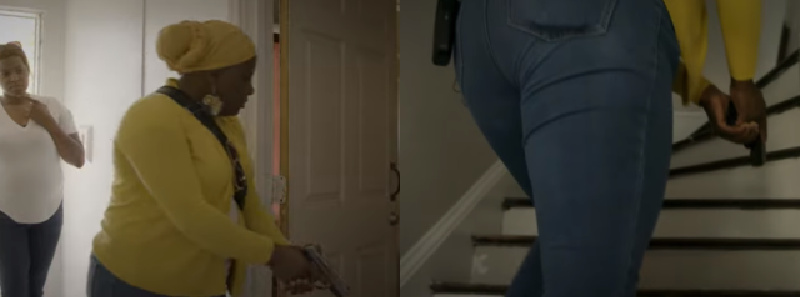
The realization of that right, and the acceptance of the responsibility that goes with it, is a liberating experience, as it has been for JoAnna.
“Once I had the education of how to use guns properly, I felt at ease with it. I am not a killer. I’m a protector. Of course, I have two girls, and so I look at it as protection. It’s not a weapon against someone, it’s protection for myself.”
No matter how the media paints gun owners, what JoAnna said gets right to the heart of what we are supposed to be. What most of us, indeed, aspire to.
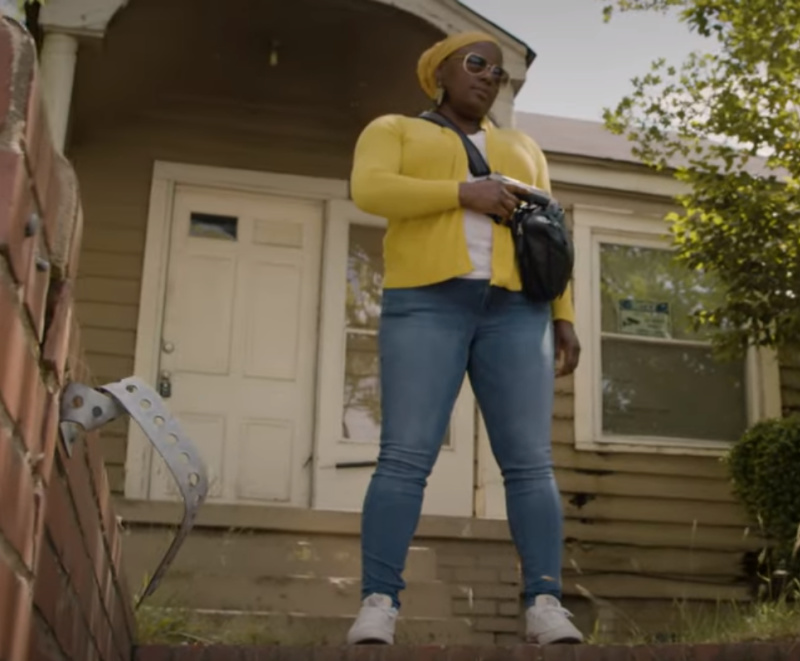
In the face of disinformation, JoAnna provides an example to us all, no matter our skill level or accomplishments. When was the last time we stopped complaining and took someone to the range? JoAnna did just that. She took her sisters and began teaching them to shoot. She exposed them to different things and let them decide what they like. She was “excited” to pass her newfound confidence on to them. They all got their concealed carry permit and JoAnna is certain they will purchase firearms for themselves.
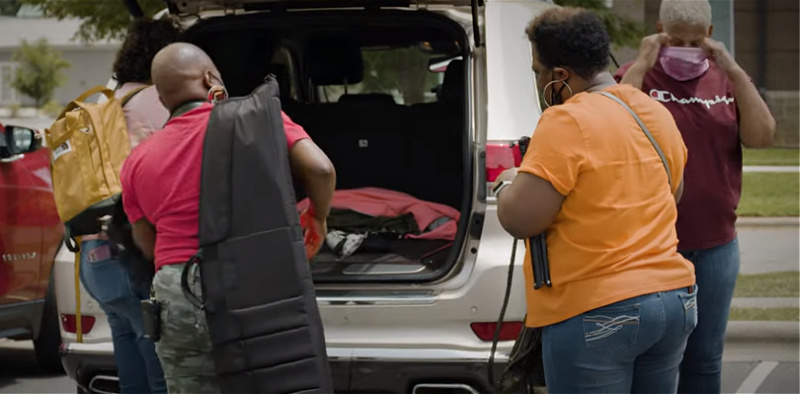
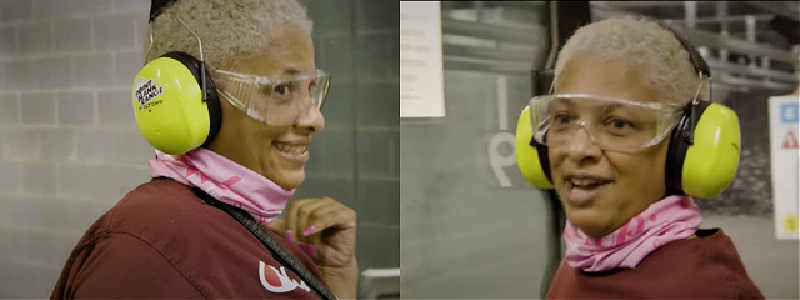
JoAnna is an ambassador for the right of self-protection, a right that exists in nature, but is repressed in almost every nation around the globe. But not here. Not if we emulate JoAnna and go find more like her.

Finally, as I noted before, JoAnna told us she has “great leadership skills.” Not only is she showing us that she is a trailblazer in the realm of firearms and self-defense, but she is also battling breast cancer. But, as we might expect at this point, she doesn’t complain. Instead, she shares her new confidence and empowerment with others.
Would that we were all of such mettle.
American Gun – The Riflesmith
Patti Miller
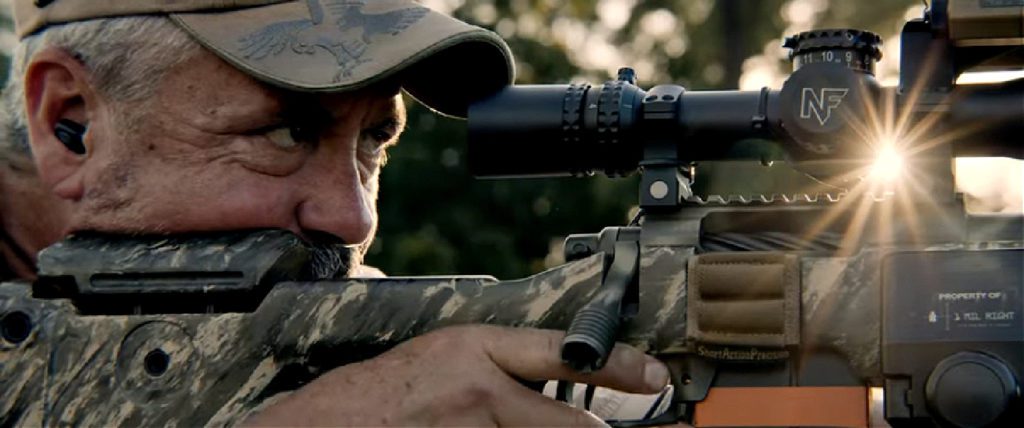
Gun owners are routinely portrayed incorrectly by those against firearms. It is a longstanding war of words and ideology that has spurred many arguments and skirmishes.
SilencerCo Productions has taken up the task to help show the personal story of any gun owner. They are profiling different real Americans and, as they put it, are “taking an intimate look at the foundation of American Freedom focusing on the right to bear arms as outlined in our constitution and the vast diversity of people that exists among those who support the second amendment across this country.”
Gun owners are routinely portrayed incorrectly by those against firearms. It is a longstanding war of words and ideology that has spurred many arguments and skirmishes.
SilencerCo Productions has taken up the task to help show the personal story of any gun owner. They are profiling different real Americans and, as they put it, are “taking an intimate look at the foundation of American Freedom focusing on the right to bear arms as outlined in our constitution and the vast diversity of people that exists among those who support the second amendment across this country.”
Some of you may know who Terry is after making a serious name for himself as an expert Riflesmith at KMW Long Range Solutions in Louisiana. Since the late 1980’s, he’s been making incredibly accurate and durable weapon systems in his one-man shop. He originally started with doing small custom work while competing in military and law enforcement shooting competitions. When he started getting more and more phone calls for jobs, he progressed into creating full rifles, all while maintaining his high level of marksmanship. He hand-builds, finishes, accessorizes, and test fires each rifle just like he’s always done.
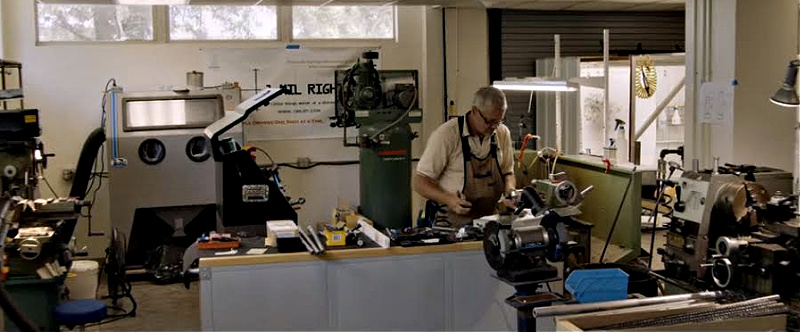
His production workflow and attention to detail don’t go unnoticed. Terry feels that clients are trusting him to provide something to them that is consistent and reliable and will work under any conditions. “My clientele is absolutely trusting me, the same way with our training stuff, … to provide something for them that is consistent,” says Terry. With that trust, he is able to give his full attention to each rifle to make sure it meets those levels before going out to any agency or individual officer.
The report with the client is necessary and has to be established before the build or they wouldn’t trust him to do it. He stresses that no human is perfect, but he works hard to minimize the possibility of anything happening from the initial design, to the machining process, the finishing and testing of the system.
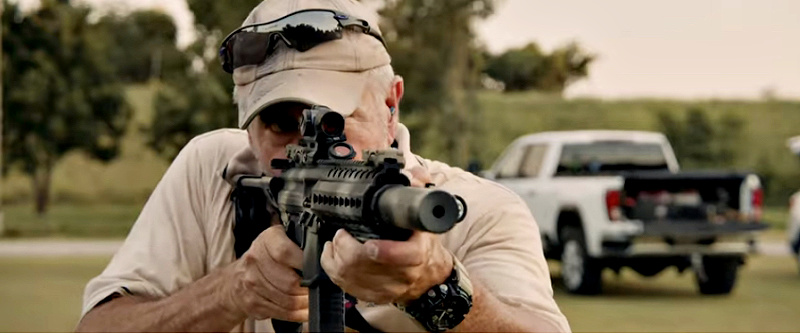
To Terry, and hopefully he would have the same view even if he wasn’t in a firearm related business, he sees the second amendment as fundamental as life, liberty and the pursuit of happiness. As he sees it, it really comes down to the full picture of the Second Amendment — from the intent of the Second Amendment, who wrote it, why it was written, when it was written along with the federalist papers, and all the ideas that were incorporated and drafted — it only comes behind one other amendment. That one, of course, being the First Amendment and the Freedom of Speech.
He goes on by saying that you have to look at the real timing of when it was drafted. They, the founding fathers, had just finished fighting the Revolutionary war to establish the country and our freedom. In case you need a reminder it was a war to get away from tyranny with the basic thought of letting us govern ourselves and to do what we wanted on our land.
Terry goes on to say that at the time it was written, the weaponry they were wanting to protect was considered state of the art, not just for hunting or sport shooting. But they weren’t just trying to make sure the weapons were protected. The way Second Amendment was written was to protect ourselves from an overreaching government.
When gunpowder was first invented, people were sure it would bring about the killing of mankind and the end of the world. With each new invention with weapons, like machine guns or nuclear weapons, the detractors thought the same thing. Thankfully, they were wrong and none of those advancements have brought about the end of the world.
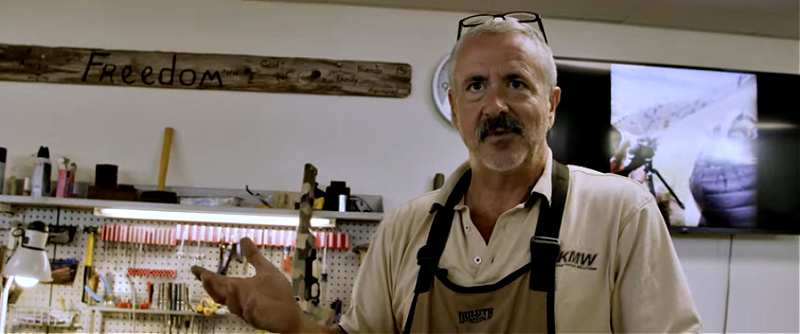
He goes on to say that some of the biggest enemies of the Second Amendment are very careful in their use of the First Amendment to downplay or detract from the importance of the Second. They use the First to work around and misinform populations regarding the Second, Forth, or other Amendments and liberties. But, as he puts it, these rights or liberties are not things that are given to us by the government. Instead, these are things that we are born with as Americans and that it’s not something that the government can take away.
“Everything that we consider to be freedoms and liberties right now, which are quickly going away … is standing firmly on the shoulders of the first and second amendment.” Terry couldn’t be more spot on. He emphasizes that we need to remember that we all on the same team as Americans and are all in this together.
He wraps up his thoughts by pointing out that he is not building rifles to impress anybody; that it is his passion, and he has no plans to slow down any time soon. When asked how much longer he was going to be doing this, he aptly replied with as long as he can feel his pulse thumping in his body, he’s going to keep going.
To see more stories of real Americans and what the Second Amendment means to them, check out SilencerCo Productions on YouTube.
American Gun – The Farmer
William Lawson
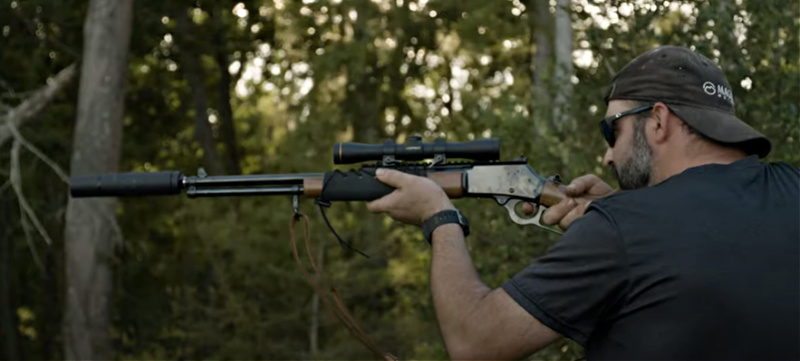
Once again, SilencerCo brings us an honest story of the average American gun owner, as opposed to the caricature we are usually fed by the “news” programs and the AI overlords of social media. Chase is a farmer, a tradition inherited from both sides of his family. A cool thing about that, aside from what I took to be a slight Cajun speech inflection, is that he raises crawfish as part of his agricultural endeavors.

It seems perfectly natural for a farmer to be raised on firearms, and Chase is no exception. He notes that he’s been around them his whole life, from the time he was old enough to hold one. Hunting is a family tradition, as well as a local way of life. Like so many of us, Chase learned to hunt from his father and grandfather. No doubt those hunts formed strong bonds and produced a lifetime of fond memories. It’s hard to beat a hunting camp for that. As Chase grew, he expanded his interest in firearms and gun-related sports, and he’s passing that along, as people like us do. A highlight of Chase’s story is seeing his daughter, with Dad at her shoulder, hitting a steel target with a rifle, and the wide grins it generates.

For a farmer of any variety, firearms are not only for hunting but also vital for varmint control. In Chase’s case, he deals with coyotes, feral pigs, and greenhead turtles. I never thought of turtles like that before, but they overpopulate and destroy crawfish lakes and fishponds. So, he uses a rifle to occasionally “thin the herd” when they poke their heads above the surface. The turtles make for “really good target practice,” he says. Looks like a lot of fun, too. During the crawfish harvest season, Chase has trouble with raccoons getting in his traps, causing a lot of damage. Small caliber rifles take care of that since I doubt anyone wants to pull a hungry raccoon away from a crawfish dinner with their bare hands.
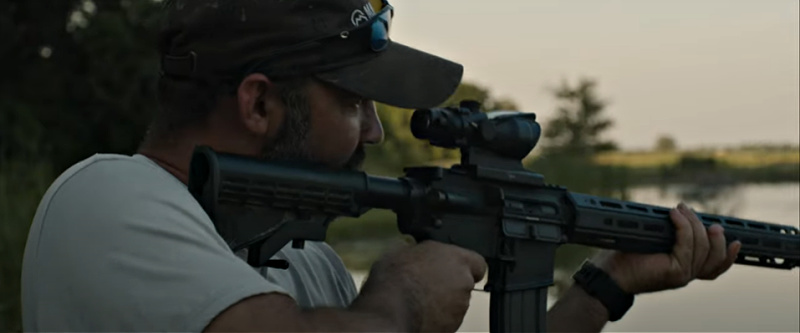
Some of the footage we see is of Chase shooting steel targets across one of his crawfish lakes with his new .338 Lapua Magnum, which he says he loves. I bet so. But, he chuckles, it “has a really big compression off of it.” No doubt. He’s dealt with that issue by adding a suppressor. Smiling, he says transitioning to a suppressed rifle was “kind of like finding Christ, I guess.” I’ll let him be the judge of that, but there’s no argument that a good suppressor can be a game-changer. Chase likes that it’s a lot more comfortable to shoot and it holds better groups. He says he rarely shoots without a suppressor anymore.
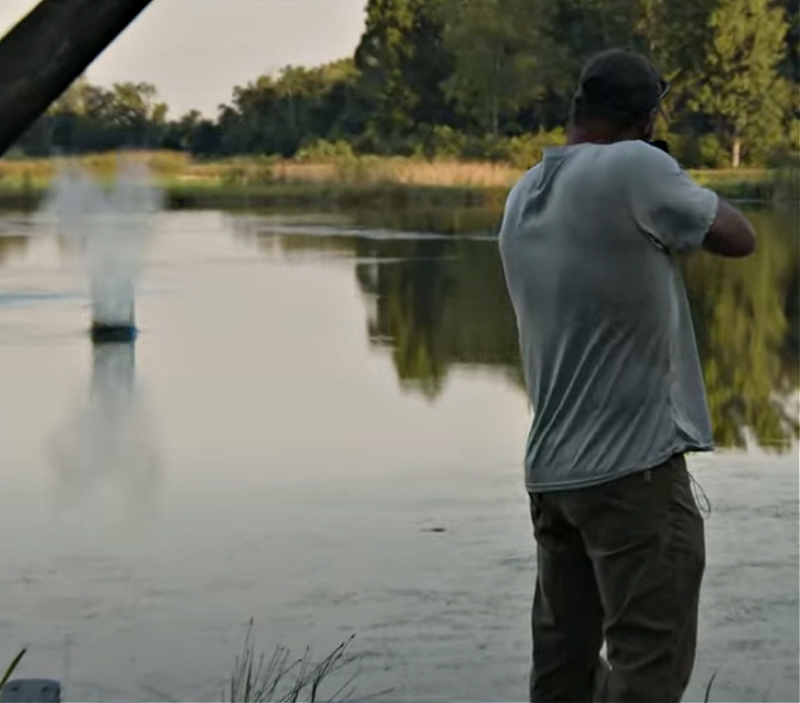
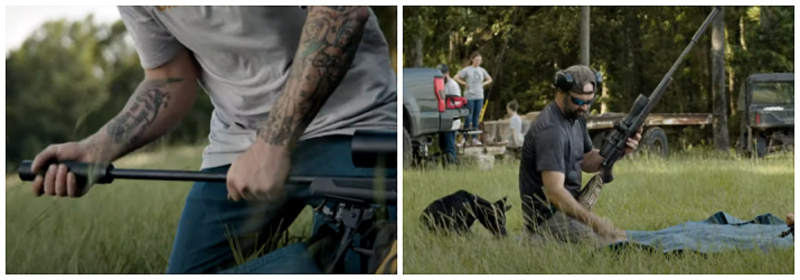

Chase laments the increasingly negative ways that gun owners are portrayed by the various media outlets. “It’s kind of a weird feeling because you almost never saw it growing up here, and now it’s such a diversity of reasons why they want to attack gun owners. To me, it’s just a little bit of nonsense…don’t know how to explain it truly. It’s getting to be a difficult thing being a gun owner today. Starting to be viewed as something different than we were back then.”
Since dogs are awesome, Chase has a new one of those too, a beautiful month and a half old German Shepherd pup. She will have some responsibility as a guard dog, but Chase doesn’t want her to be overly aggressive. German Shepherds gonna Shepherd, but I took his comment to mean that he recognizes his own responsibility for his family’s security. Maybe I read him wrong, but I doubt it.
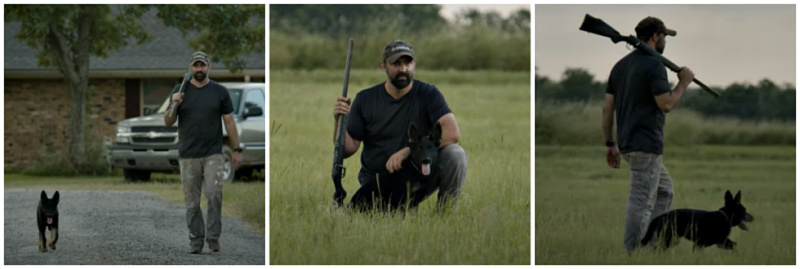
That attitude, however, doesn’t mean Chase is aggressive either. The comment about his dog proves it. “We’re just diverse people,” he says. “We’re not out to do harm. We have different purposes for having weapons, mainly for the good. You know, just because you own a gun doesn’t really mean you’re a bad person or intend to do bad things with it.” That’s the crux of it right there. As Chase said earlier, gun owners are badly, and purposely, misrepresented by many of the folks with the microphones and the algorithms.
By spotlighting people like Chase, however, SilencerCo is pushing back in a small but significant way. We are who we are, not who the bad actors so vehemently want us to be. I expect most of us can identify with Chase when he says “I’d like to continue recreational shooting. I will always continue to hunt and stay doing the traditions that I’ve always done with firearms throughout my life and want to continue that throughout the rest of my life.” That’s really all any of us want. That’s what I want. That, and to be invited to a crawfish feast at Chase’s farm. How about you?
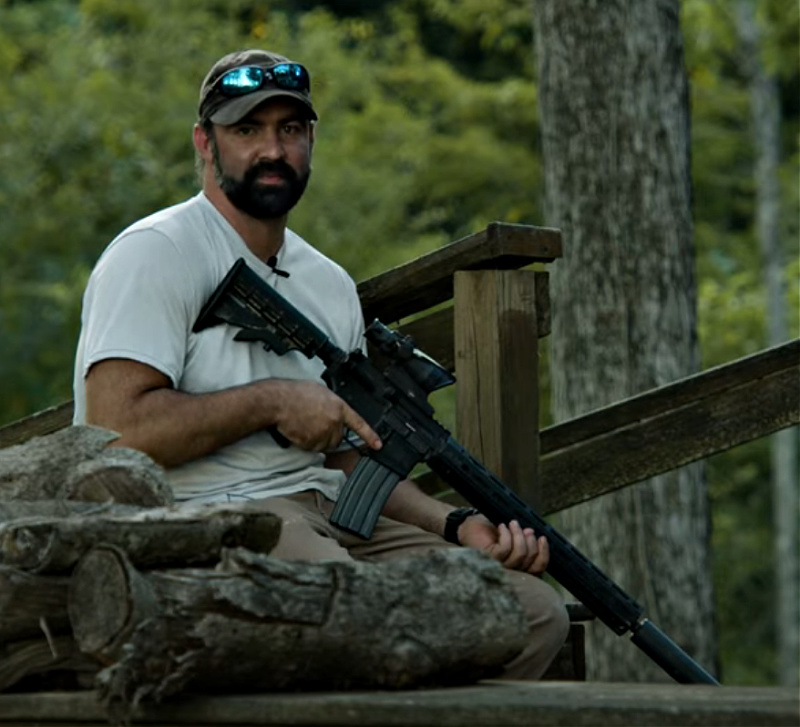
American Gun – The Advocate
William Lawson
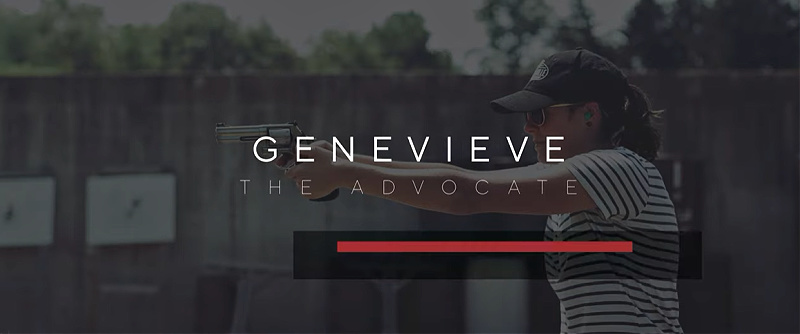
We’ve heard a lot about mental health the last few years, and rightfully so. Everywhere we look we see things that add stress to our lives. High pressure jobs, uncertain economic news, the holidays, the back-and-forth COVID situation, 24-hour cable news…all that places a strain on mental health. Not to mention the very real specter of PTSD among those who have served us best. There are constant calls for increased mental health awareness and lots of ideas, some good and some not, about how to deal with those challenges and help those who need it.
The firearms community is certainly not exempt from this. In fact, we are right in the thick of it. “Extreme Risk Protection Orders,” more commonly called Red Flag laws, are a major symptom of the increasing emphasis placed on mental health. They also demonstrate the difficulties involved in addressing these issues.
Gun rights activists often counter anti-gunners by saying it’s a mental health problem, not a gun problem, and that it’s not fair to lump all gun owners, or even most gun owners, into the same basket with criminals who use guns to create mayhem. That may be so, but it’s easy for us to fall into a similar trap.
A blanket condemnation of people with mental health issues isn’t fair to the millions of folks who struggle with mental health but are not dangerous to anyone. The fact that mental health problems are so many-faceted doesn’t help. The term “mentally ill” can refer to someone with mild depression or it can refer to a psychopath. There is absolutely no such thing as one size fits all when it comes to mental health.
Which brings us to the video. Genevieve Jones is a firearms instructor and mental health advocate in Pennsylvania. She not only advocates for those suffering from mental health challenges, but she also faces some of those challenges herself.
Genevieve has dealt with obsessive-compulsive disorder (OCD) since she was about eight years old. She is also coping with severe anxiety. Either of these conditions can be debilitating, but together they present a real challenge to just living day to day. Like many folks, Genevieve finally had to seek professional help. Her condition was serious enough that she had to spend eight or nine hours a day in an intensive behavioral health program learning “how to live again.”
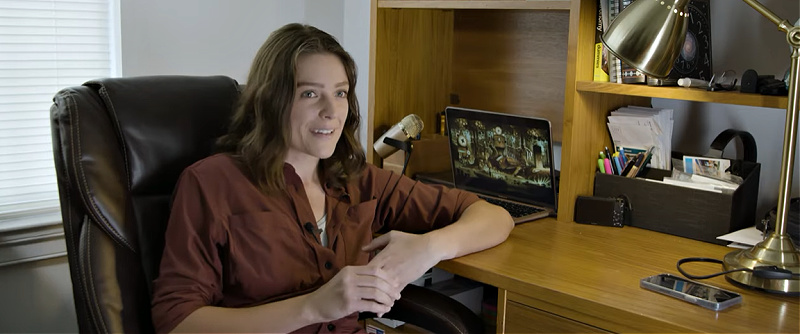
When she first opened up about her condition, after years of suffering, she was “expecting everybody just to hate me. I was expecting everybody to say that my guns should be taken away and I should be afraid of talking about it.”
That is a real concern that I have heard myself. I bet many of you have too. I know there are many veterans who face that dilemma, thanks to certain rules put in place by certain politicians. I also know there are people who are afraid to get help because they fear a less-than-ideal diagnosis could jeopardize their rights. The danger of that varies from state to state, although a federal disqualification will most likely not be triggered by voluntarily seeking help. Genevieve is speaking out against the loss of those rights and is providing an alternative that may help in that regard. More on that later.
Genevieve is open about taking medication and seeking professional help and is living proof that a diagnosis need not endanger one’s rights. Taking those steps to help oneself is not shameful, though the stigma of mental health problems is very real. As with any problem, the first step is admitting it’s there. Then you take the steps to deal with it. Getting help may be one of those steps, but there are others too. Genevieve seeks out activities that help her deal with it. One of those is bicycling. Hard exercise works. We all know that, whether we do it or not. I may or may not be slacking in that area.
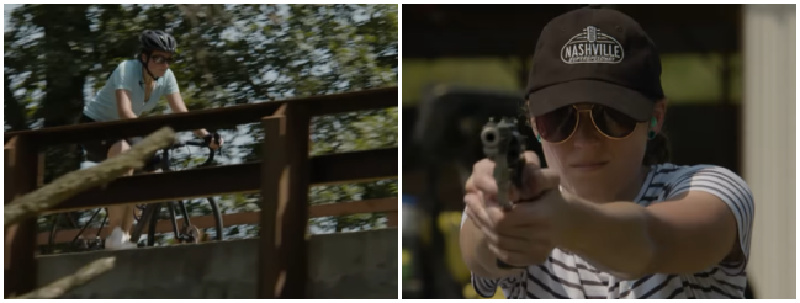
Another is shooting. “Shooting is something that really helps me,” she says. “It just quiets everything that’s going on in my mind.” But, as she noted before, she had been afraid her friends and family would want to take her guns away.
Her Dad, however, came through, as Dads so often do. “I was in a really, really dark place. I was having scary thoughts, you know, I was self-harming and my Dad just said to me ‘I trust you, come to the range with me. I know you can do it, let’s get you out of the house.’ And as soon as I started shooting again, it quieted my mind. I just felt so, at peace, and I realized how skewed everybody’s perception of mental illness is, specifically in the gun industry, because I’m not a danger to people and I don’t think that many mentally ill people are a danger to people, and it would be really sad for them to miss out on something that could potentially help them as much as it helped me.”
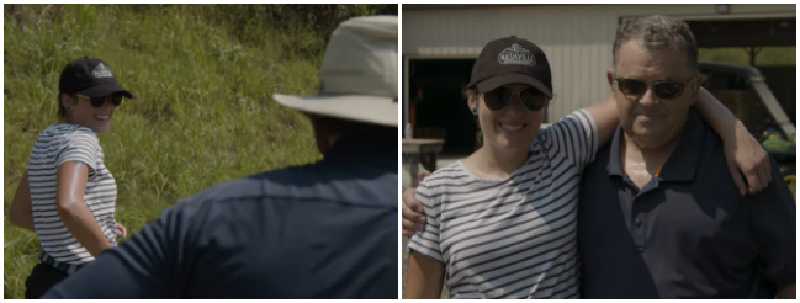
I feel compelled to add that this is not a suggestion that everyone who is dealing with a mental health problem should be taken to the range and handed a gun. We’ve seen where that can lead. But it also does not mean that individuals who are not dangerous should have their firearms taken away because they seek help. Like anything else, mental health treatment is an individual thing, and it cannot, and should not, be generalized by anyone.
For Genevieve, however, going back to the range with her Dad helped provide motivation to get better. “It made me want to go to therapy. It made me want to work on myself so that I could be an inspiration to other people who are suffering in the same way.” Another aspect of Genevieve’s treatment is her dog, Felix. Felix is trained to recognize the symptoms of her OCD and help interrupt the obsessive behavior. Because, as I’ve noted elsewhere, dogs are just awesome like that. Felix has even been to SHOT Show, so he’s definitely got it going on.

In addition to being a firearms instructor, Genevieve works with Jon Patton at The Gun Collective making great video content, among other things. If you’re not familiar with Jon, you should check him out at his website and on YouTube. Genevieve says she’s “Not taking life too seriously and meeting a bunch of really, really amazing people in the gun industry.”
Genevieve’s greatest contribution to the gun world might just be the creation, along with her friend Sarah Albrecht, of Hold My Guns. Hold My Guns is a non-profit organization featuring a network of vetted people in the gun industry who provide temporary and voluntary storage for people’s firearms for a variety of purposes, whether it be a temporary crisis, a deployment, vacation, or just if the grandkids are coming to stay for a while. Their special emphasis is suicide prevention. “We want to raise awareness about mental health in the gun industry, which is something that is specifically very important to me also,” she says. If you would like to avail yourself of their services or if you or your business would like to volunteer for or support the program, you can do so at Hold My Guns.
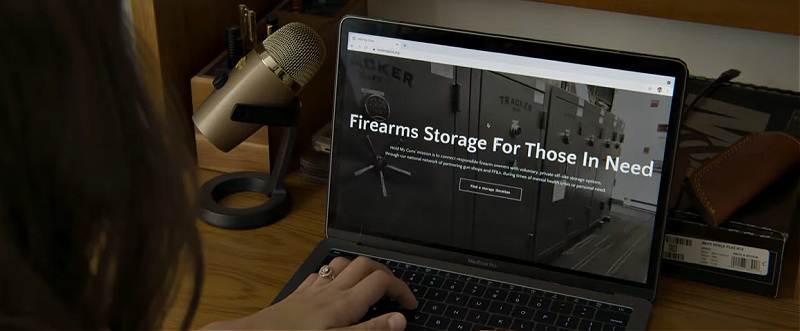
Genevieve has strong opinions on the Second Amendment too. What she has to say is so good that I wrote down long strings of quotes and I thought about putting them all down here. But I think it’s better to hear them spoken with the conviction in Genevieve’s voice, so I’m going to once again encourage you to watch the video, while I hit the highlights. She talks about how her opinions on the Second Amendment have evolved as she became more involved in the gun community. That rings true to me since I had a similar experience.
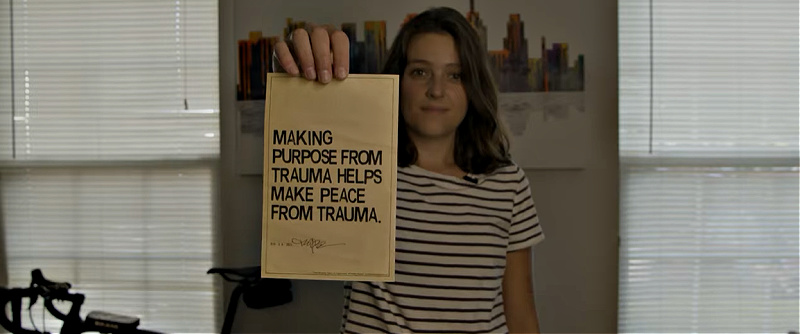
She talks about the polarization of American opinion and the importance of talking with people who don’t see things the way we do. I think we can all understand that. I think Genevieve hits the proverbial bullseye when she says that we have to understand people’s fear and lack of education on guns and the Second Amendment. We can’t just yell “Shall Not Be Infringed” over and over again. “I think we’re beyond the point of that making any difference.” As much as we might wish otherwise, I think she is exactly right, and I don’t think the other side is suddenly going to come around on that one.
We have to be the ones who reach out. Not by giving ground on our beliefs, but by being willing to express our beliefs in a reasoned way. Trust me, I know how hard that is, and so does Genevieve, since she has received all kinds of vile threats for speaking up, but I think that’s the way forward.
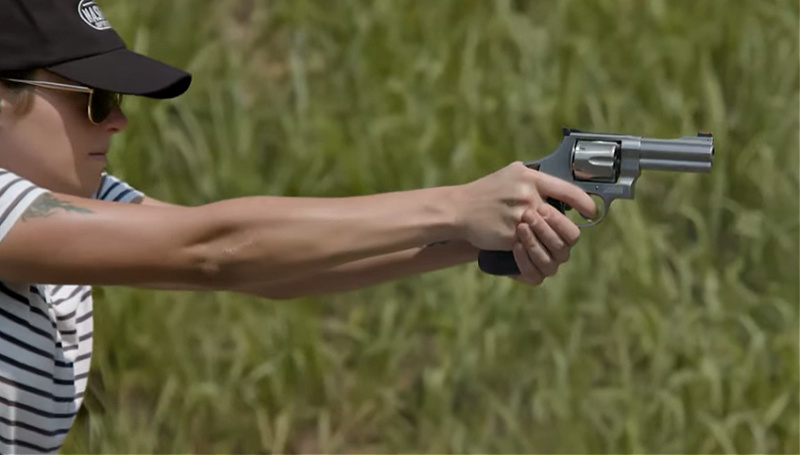
I will offer one quote in closing. Regarding the Second Amendment as a right for all, she says:
If you care about freedom and you care about your brothers and sisters who want to own firearms, then you should care about protecting their rights. You should care about protecting their mental health, and you should care about making surethat they feel seen and heard and not shamed. And it’s something that is important and close to my heart because I want to be able to protect myself and my family and I think a lot of other people feel the same way.
And that’s what it’s about. It’s easy to exclude certain groups of people as long as it doesn’t affect you. I have fallen into that one myself, on occasion. But all we’re doing is dividing ourselves.
American Gun – The Immigrant
William Lawson
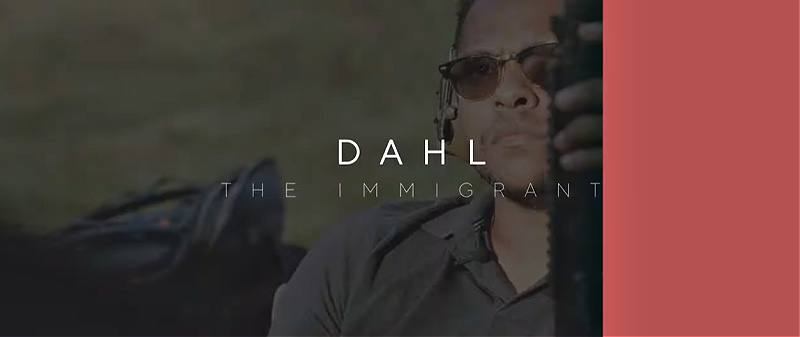
SilencerCo has done it again with the latest installment of their outstanding American Gun video series. If you haven’t checked them out yet, they are short positive videos about real gun owners, as opposed to the sensational garbage you get from most media outlets. This one introduces us to Dahl, who immigrated from the Caribbean Island nation of Dominica.
Dahl came to the US when he was 25 through a path to citizenship by way of service in the US Navy, but he followed a roundabout path to get here. He lived in other Caribbean countries before going to Europe, where he considered spending the rest of his life in Spain. The deal breaker there, he says, was that “I couldn’t shoot guns. That was one thing I couldn’t do that was pretty important.” Most of us are probably aware of the restricted nature of gun ownership in Europe, so that’s perfectly understandable.
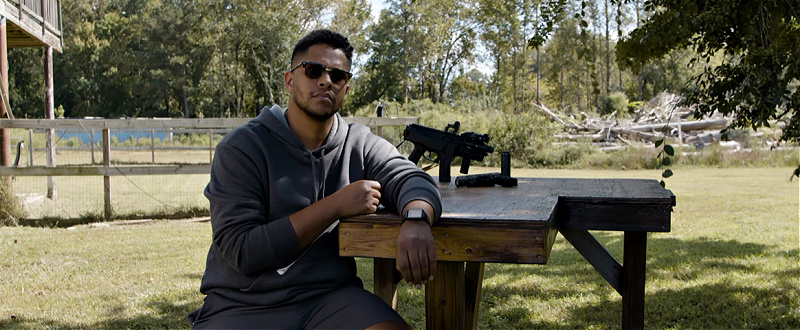
His first American gun store visit was eye-opening. The freedom he had to buy and own the gun, or guns, of his choice, surprised him. “Culturally, I’ve never seen this before. This is absurd!” Absurd in a good way. Dahl loves that he doesn’t need a reason to own a gun or go shooting here. “This is America. You just do what’s cool.” He is impressed that the Second Amendment guarantees the right of the people to arm themselves if they so choose and notes that it is incomparable to any other nation on Earth.
It didn’t take long for the benefits of shooting to materialize. There is more than a decade between Dahl and his younger brother. They have used the sport to bond with one another. Dahl credits his brother’s imagination with his own drive to try new things and get better. They appreciate the mental aspects of shooting, evaluating their progress, and improving their skills. The brothers have extended that love of shooting to a wide circle of friends who come to train with them.
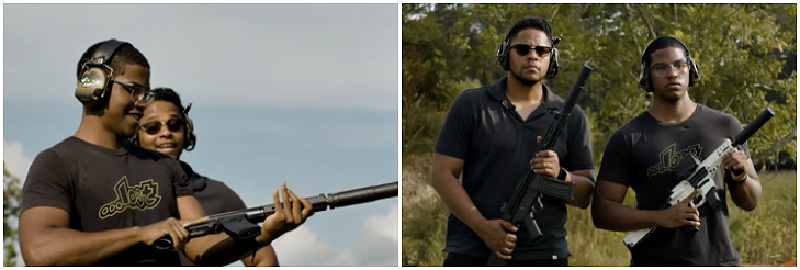

Dahl says he helps people “get into firearms in general.” A couple of those friends describe their progress and how they train. Their confidence is apparent by how they speak about it. One of those friends talks about how much fun they have challenging themselves and hitting their targets and finding their holds. “We enjoy ourselves in trying to accomplish that.” The enjoyment is clear from all the smiles we see in the video.

Another is a lady originally from Zimbabwe. “I never really liked guns,” she says, noting the cultural differences between her home country and the US. “You don’t see them (guns) often.”
As with other nations, gun ownership is suppressed in Zimbabwe. She became interested in learning to shoot because of her husband, who recently started a firearms business. She had been “observing and watching from a distance,” and decided that “the best way to support him is to accept what he is passionate about.”
They began training with Dahl and the day the video was shot was her fourth on the range. Now, she has decided that it’s important for her to learn to defend herself and her family. Dahl tells her that she has gone from anti-gun to “straight pro-gun,
all the way.” Her big smile indicates that she agrees.


Dahl talks about the diversity of gun owners, from the guys with the trucks with big flags to the suit-and-tie-wearing sedan drivers. You see all kinds of people working toward similar proficiency goals. “Most people (gun owners) understand the dangers of these weapons and they respect that.” This is an important point. Gun owners, especially those who own and train with certain kinds of firearms, are stereotyped by the media and politicians, and not in a good way. The community needs people like Dahl and his friends to show people otherwise. Gun owners, by and large, are just regular folks. Being into guns and shooting doesn’t make them dangerous.
Plus, as most of us reading this article probably know, shooting is fun. Dahl shows us a suppressed AR and says it has “fun mode” and “boring mode.” I expect you can figure out what those modes are, but he demonstrates anyway. It’s clear that Dahl understands and appreciates the unique liberty enjoyed by Americans to arm themselves. Many argue that all people have that right, but few have the liberty to exercise it. “If I didn’t get on that plane and come to the US,” he says, “none of this would be possible.” With the help of folks like Dahl and his friends, we can make sure it stays that way.
